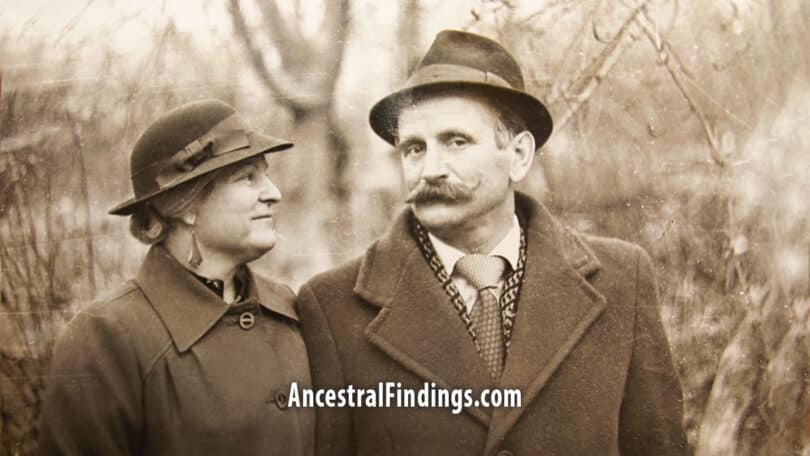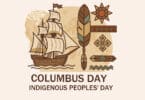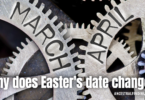Every June, many of us pause to honor the fathers in our lives—the ones who taught us how to change a tire, tied our fishing lines, and maybe even showed us how to be brave in the quietest of ways. But for all the neckties and backyard barbecues, few people know the full story of how Father’s Day came to be. The holiday didn’t spring up as easily as Mother’s Day, nor was it without its share of controversy, setbacks, and surprising twists. The roots of Father’s Day reach deep into early 20th-century America—and they begin not with a celebration, but with a tragedy.
A Daughter’s Love: The Story of Sonora Smart Dodd
The most widely accepted origin of Father’s Day as we know it traces back to Spokane, Washington in 1909. Sonora Smart Dodd, a woman raised by her single father after her mother died in childbirth, sat in church on Mother’s Day and wondered—why wasn’t there a day to honor fathers too?
Sonora’s father, William Jackson Smart, had been a Civil War veteran and a widower who raised Sonora and her five siblings alone. She deeply admired him and believed other fathers deserved recognition for their sacrifices and dedication.
Determined to act, Sonora began campaigning for a day dedicated to fathers. She proposed June 5th, her father’s birthday, as the date. While the initial planning pushed the date back, Spokane celebrated its first Father’s Day on June 19, 1910. Churches held sermons focused on fatherhood, and young women handed out red roses for living fathers and white roses to honor those who had passed.
Sonora Smart Dodd kept advocating for the idea for decades—facing an uphill climb much steeper than the one Anna Jarvis, founder of Mother’s Day, encountered.
The Roadblocks: Skepticism and Stereotypes
The early 20th century wasn’t exactly ripe for celebrating dads in a sentimental way. American culture of the time tended to view fatherhood in more utilitarian terms—fathers were breadwinners, disciplinarians, and stoic household heads, not the subjects of emotional tributes.
Critics, including some men, mocked the idea of Father’s Day as unnecessary or overly sentimental. Others believed it was an attempt by retailers to exploit the holiday spirit for profit. Newspapers printed satirical pieces about inventing holidays for everything from brothers-in-law to leftover turkey.
Even Anna Jarvis herself, who eventually soured on the commercialization of Mother’s Day, opposed Father’s Day for the same reason. Still, the idea persisted—thanks to grassroots support and the slow but steady cultural shift in how Americans viewed parenting and gender roles.
Presidential Support and a Push for Legitimacy
Although Father’s Day didn’t receive the immediate national backing that Mother’s Day enjoyed, some presidents did lend it support.
President Woodrow Wilson approved of the idea in 1916 and even participated in a Father’s Day event via telegraph signal. However, he stopped short of issuing a proclamation.
President Calvin Coolidge supported it in 1924, saying it would “establish more intimate relations between fathers and their children” and “impress upon fathers the full measure of their obligations.”
Still, there was no federal mandate, and Father’s Day remained mostly a local or regional observance.
The next few decades saw intermittent momentum, with various organizations—including trade groups for neckties, tobacco, and greeting cards—championing the holiday more for its business potential than its emotional value. It wasn’t until the mid-20th century that things finally began to change.
A Holiday at Last: Nixon Signs it Into Law
Father’s Day didn’t become an official national holiday until 1972—nearly six decades after the first observance in Spokane.
It was President Richard Nixon who signed the proclamation making it a permanent federal holiday to be celebrated on the third Sunday of June. In his words, the day would “honor our fathers and acknowledge the many contributions they have made to the strength, character, and greatness of our country.”
For many, this was long overdue. The feminist movement of the 1960s and 1970s had helped broaden public understanding of the complexities of family life and fatherhood. Fatherhood was no longer viewed solely through a lens of economic provision. Emotional involvement, nurturing, and shared responsibilities began to enter the cultural conversation—and Father’s Day found firmer footing as a result.
The Commercial Side: Cards, Grills, and Gadgets
As with many holidays, Father’s Day quickly became a commercial event. By the 1980s, it was a major retail moment, albeit never as large as Mother’s Day.
Stores promoted tools, sports gear, electronics, and barbecuing supplies—leaning into cultural ideas about what dads “really want.” Greeting card companies created categories for all kinds of father figures: stepfathers, grandfathers, new dads, and even pet dads. Restaurants advertised Father’s Day brunches and free meals. And retailers filled shelves with every sort of “#1 Dad” mug imaginable.
The holiday may not have started with commercial intent, but there’s no denying that money plays a big role in how it’s celebrated today. According to the National Retail Federation, Father’s Day spending in the U.S. now totals over $20 billion annually—a figure that rivals Mother’s Day in recent years.
If you want to explore how holidays and trends influence genealogical discovery, you might enjoy reading How Popular is Genealogy?, which dives into the cultural side of family history research.
The Meaning Behind the Day
Despite its commercial layers, at the heart of Father’s Day is a personal connection. Whether or not a gift is given, the day provides an opportunity to reflect on what fatherhood means, how it has shaped our lives, and how we choose to honor the men who took part in raising us.
And it’s not always a biological father who gets the recognition. Many people honor uncles, brothers, stepfathers, mentors, or family friends who stepped into a fatherly role. The flexibility of the holiday—how it has grown to include all kinds of father figures—is one of its most endearing traits.
In genealogy, Father’s Day often prompts people to reflect on their paternal line, dig into their surnames, or revisit stories about the men who carried their family forward through different eras. For tips on how to research your father’s side, take a look at How to Trace Your Father’s Line Through DNA.
You might also enjoy our Genealogy Research Tips if you’re just beginning to build out that branch of your family tree—or if you’re hitting a wall and need a few new ideas.
Father’s Day Around the World
Interestingly, the U.S. isn’t the only country that honors dads—though the date and customs vary.
In Germany, Father’s Day (Vatertag) is celebrated on Ascension Day, 40 days after Easter. There, it’s common for groups of men to spend the day hiking and pulling small wagons filled with beer and regional foods.
Thailand celebrates Father’s Day on December 5, the birthday of the late King Bhumibol Adulyadej, and traditionally, people give their fathers a canna flower.
Brazil observes Father’s Day on the second Sunday of August, while Italy and Spain celebrate it on March 19, the Feast of Saint Joseph, reflecting their Catholic heritage.
These international observances reflect cultural values around family and fatherhood—and show how the role of a father, in all its forms, is a near-universal cornerstone of society.
Looking Back: Fatherhood in Historical Records
For family historians, Father’s Day is more than a chance to pass around the potato salad—it’s also a great reminder to look deeper into your paternal lines.
Fathers, grandfathers, and great-grandfathers often show up in historical records as heads of household, landowners, veterans, and witnesses on documents. But beyond the census entries and wills, the stories of their personalities and struggles can be harder to uncover.
Ask relatives about memories of your grandfather or great-grandfather—how they spent their days, what kind of work they did, how they approached family. Look for old photos, letters, journals, or even newspaper clippings that might reveal the man behind the name. For help with that, you can explore our Free Family Tree Lookups or This Week’s Free Genealogy Lookups—they might lead you to a record that sparks a new discovery.
One listener of mine once found an article in a small-town newspaper about her great-grandfather being the only man in the county who refused to buy a car and stuck to his horse and buggy until the 1950s. That quirky detail brought his character to life far more than a birth or death date ever could.
These are the things Father’s Day can stir up—a desire to know more, to remember, and maybe even to preserve those stories for the next generation.
In the End, It’s About Gratitude
Whether your Father’s Day involves a phone call, a quiet afternoon on the porch, or a memory honored with flowers, it’s a day that traces its beginnings to one daughter’s devotion over a century ago. Sonora Smart Dodd believed her father’s love and sacrifice were worth celebrating—and thanks to her persistence, we now have a day to do just that.
So this year, whether you’re pulling out the grill, flipping through old photo albums, or placing flowers by a headstone, know that your remembrance connects you with a long tradition of appreciation and reflection. That’s what makes Father’s Day worth observing—not the cards or gifts, but the stories and relationships that bind us across generations.







